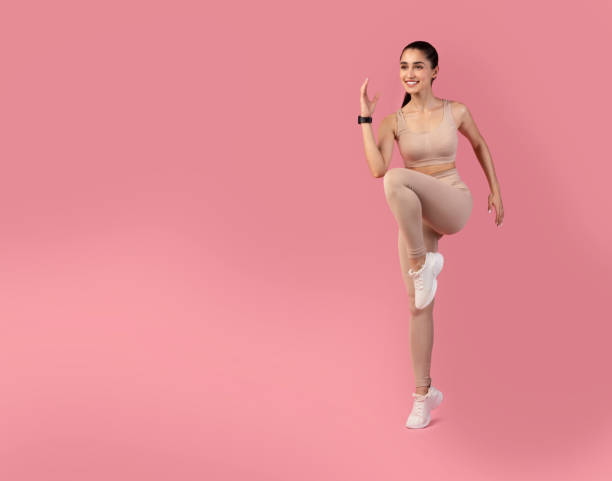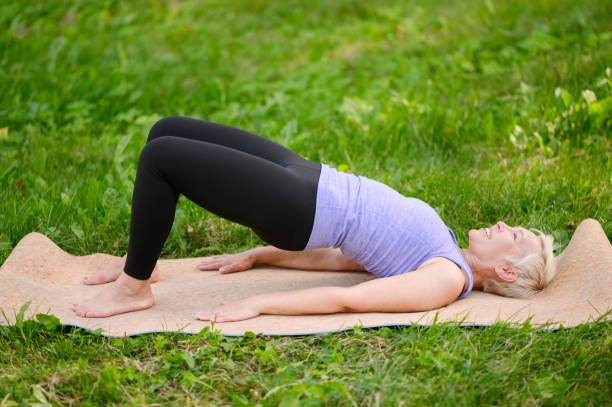This post contains affiliate links, meaning that I may receive compensation if you make a purchase through these links. As an Amazon Associate, I earn from qualifying purchases. This compensation does not influence the content, or recommendations provided. The opinions expressed are my own, and I strive to provide honest and unbiased information.
Strengthen Your Hip Flexors: 5 Key Exercises
Hip flexors play a crucial role in almost every lower body movement, from walking and running to sitting and standing. Strong hip flexors can improve posture, enhance athletic performance, and reduce the risk of injury. However, many people neglect these muscles, leading to tightness, weakness, and pain. Whether you’re an athlete looking to improve performance or someone aiming to maintain mobility as you age, focusing on your hip flexors is essential.
In this post, we’ll explore the top five exercises to strengthen your hip flexors, including alternatives for those with limited mobility.
1. Standing Hip Flexor March

The Standing Hip Flexor March is a simple yet effective exercise that can be performed anywhere, making it ideal for those with busy schedules or limited space.
How to Perform:
1. Stand tall with your feet shoulder-width apart and engage your core.
2. Slowly lift one knee toward your chest as high as possible without leaning backward.
3. Hold the position for a moment before lowering your leg back down.
4. Repeat with the other leg.
5. Perform 3 sets of 10-15 repetitions per leg.
Alternative for Limited Mobility:
If standing is difficult, try a seated version. Sit in a chair with your feet flat on the ground. Lift one knee toward your chest, hold, and then lower it back down. This exercise can also be done using resistance bands for added challenge.
2. Lying Leg Raises
Lying Leg Raises target the lower abdominal muscles along with the hip flexors, making it a great dual-purpose exercise.
How to Perform:
1. Lie flat on your back with your legs extended and arms by your sides.
2. Keep your legs straight and lift them toward the ceiling until they are at a 90-degree angle.
3. Slowly lower your legs back down without letting them touch the floor.
4. Perform 3 sets of 12-15 repetitions.
Alternative for Limited Mobility:
For those with limited mobility, try a bent-knee version. Instead of keeping your legs straight, bend your knees and bring them toward your chest, then lower them back down. This reduces the strain on your lower back and hips.
3. Hip Flexor Stretch with Resistance Band
This exercise not only strengthens but also stretches your hip flexors, promoting flexibility and reducing tightness.
How to Perform:
1. Secure a resistance band around a sturdy object and loop the other end around your foot.
2. Lie on your back with your knees bent and feet flat on the floor.
3. Slowly extend the leg with the band, feeling a stretch in your hip flexor.
4. Hold the position for 15-30 seconds, then relax.
5. Perform 3 sets of 10-12 repetitions on each leg.
Alternative for Limited Mobility:
If lying down is uncomfortable, perform this exercise seated. Sit in a chair, secure the band, and extend your leg forward. This position provides a gentler stretch while still engaging the hip flexor muscles.
4. Mountain Climbers
Mountain Climbers are a dynamic exercise that targets the hip flexors while also providing a cardiovascular workout.
How to Perform:
1. Start in a plank position with your hands directly under your shoulders.
2. Quickly bring one knee toward your chest while keeping the other leg extended.
3. Switch legs rapidly, as if you’re “climbing” in place.
4. Continue for 30-60 seconds, focusing on maintaining proper form.
5. Perform 3 sets.
Alternative for Limited Mobility:
For a low-impact version, perform this exercise slowly and controlled, focusing on form rather than speed. Alternatively, try standing mountain climbers by raising your knees toward your chest while standing, reducing the strain on your wrists and lower back.
5. Hip Bridges

Hip Bridges not only strengthen the hip flexors but also engage the glutes and lower back, offering a comprehensive lower body workout.
How to Perform:
1. Lie on your back with your knees bent and feet flat on the floor.
2. Place your arms by your sides, palms facing down.
3. Lift your hips toward the ceiling, squeezing your glutes at the top.
4. Hold for a moment before lowering your hips back down.
5. Perform 3 sets of 15-20 repetitions.
Alternative for Limited Mobility:
If you have limited mobility, try a supported bridge. Place a pillow or cushion under your lower back to provide extra support as you lift your hips. You can also reduce the range of motion by lifting your hips only a few inches off the ground.
Incorporating Hip Flexor Exercises into Your Routine
Strengthening your hip flexors is not just about improving one specific area; it’s about enhancing overall mobility and reducing the risk of injury. Whether you’re an athlete or someone looking to maintain functional fitness, these exercises can be tailored to suit your needs.
Tips for Success:
1. Warm-Up: Always warm up before performing hip flexor exercises to reduce the risk of injury. A quick 5–10-minute warm-up can include light cardio, such as walking or cycling, and dynamic stretches.
2. Consistency is Key: Aim to perform these exercises 3-4 times a week for the best results. Gradually increase the intensity or repetitions as your strength improves.
3. Listen to Your Body: If you experience pain or discomfort, stop the exercise and consult with a healthcare professional. It’s important to differentiate between muscle soreness and pain that could indicate an injury.
4. Combine with Stretching: Regularly stretch your hip flexors to maintain flexibility. Tight hip flexors can lead to lower back pain and posture issues, so incorporating stretches alongside strengthening exercises is crucial.
5. Stay Hydrated: Hydration plays a key role in muscle function and recovery. Make sure to drink plenty of water before and after your workouts.
Final Thoughts
Strong hip flexors contribute to better posture, improved athletic performance, and overall functional fitness. By incorporating these exercises into your routine, you can enhance your hip flexor strength and enjoy greater mobility and reduced injury risk. Remember to start slowly, focus on proper form, and modify the exercises as needed to suit your mobility level. Whether you’re a seasoned athlete or just starting your fitness journey, strong hip flexors are essential for maintaining a healthy, active lifestyle.
Another alternative is to make use of exercise videos targeting the hips.
Stay consistent, listen to your body, and you’ll soon notice the benefits of stronger, more flexible hip flexors in your daily life.
For more Exercise Incentive, read: Physical Fitness: Why Important?


